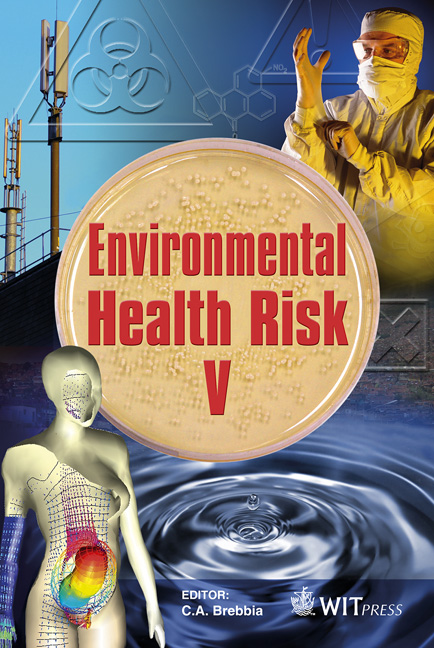Arsenic Polluted Groundwater: Epidemiological Study And Efficient Removal Method
Price
Free (open access)
Transaction
Volume
14
Pages
10
Page Range
133 - 142
Published
2009
Size
688 kb
Paper DOI
10.2495/EHR090131
Copyright
WIT Press
Author(s)
G. Badalians Gholikandi, M. Sadrzadeh Ardebili, R. Riahi & H. R. Orumieh
Abstract
Arsenic is mainly found throughout the crust in arsenic sulfide, metal arsenate and arsenide forms. The pollution of the ground water in some regions in the west of Iran, especially in Kurdistan province, which is above the allowable range (0.01 mg/lit), requires an optimum technical and economic solution for its removal. This research investigated the epidemiological situation and the feasibility of removal of arsenic from groundwater using the best efficient method considering local, economical and technical parameters. Field monitoring of water resources showed that in seven villages the arsenic concentration was higher than the WHO guideline (10 µg/L to <500 µg/L). Using a logistic regression model, there is found to be a significant relation between lifetime relative intake of arsenic from drinking water and hyperkeratosis and also hyper pigmentation. Correlation between hyperkeratosis and hyper pigmentation is considerable. According to results of hair analysis, arsenic concentration in hair is from 0.021 to 3.41 with average of 0.56 mg/kg. There is a close relation between hair arsenic and total arsenic intake via drinking water. After investigation of the epidemiological and environmental parameters, two pilot studies, modified activated alumina and the softening method, were considered. According to the results of the modified activated alumina pilot study, it has high efficiency for arsenic removal. The adsorption isotherm for both species of arsenic (III and V) is compatible with both Freundlich and Langmuier models. The results of the softening pilot studies show that in pH>10.5 removal is done up to about 90% and for the initial arsenicKeywords
arsenic, ground water, epidemiology, removal efficiency





